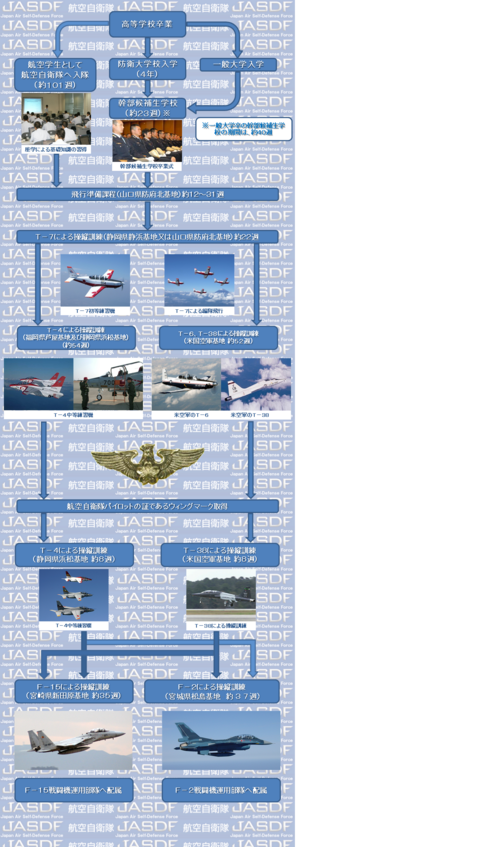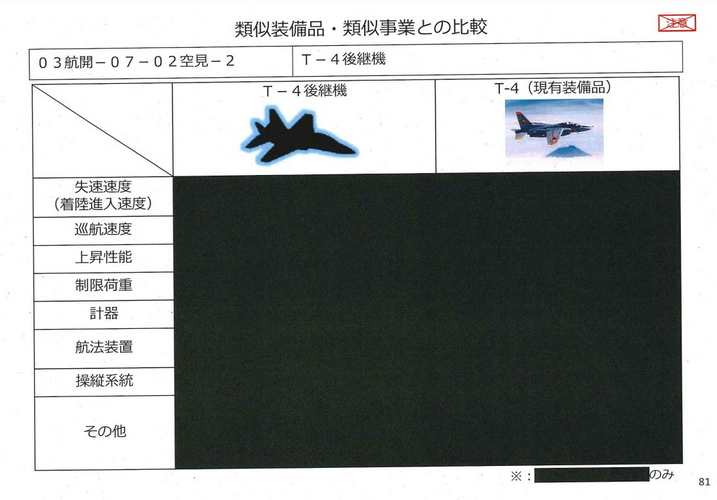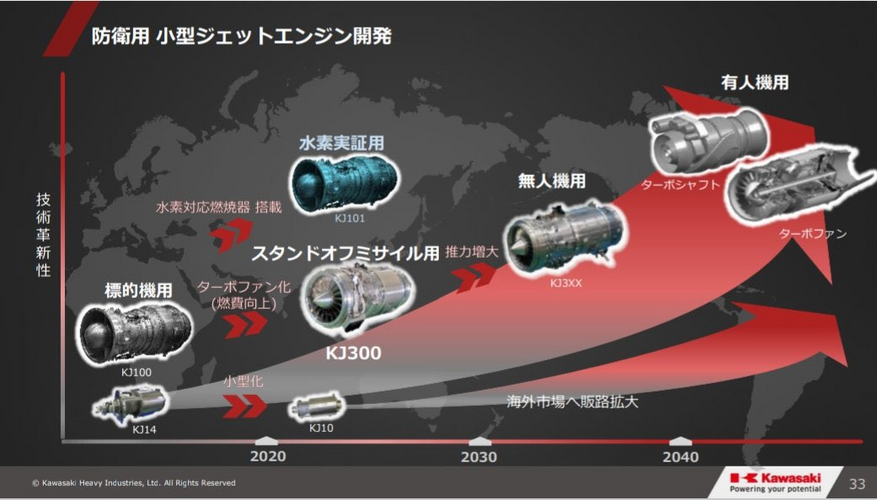It has been known that JASDF is already evaluating the possible options of replacing T-4 and T-7 (I'll call T-7A Red Hawk to avoid confusion) since at least last year and have sent RFIs for the evaluation of follow-on trainer acquisition strategy.
For the T-7, I think they will go for either the PC-9 or 12, or the Tucano and license produce it locally. Considering its characteristics, they'll probably also need a new ab-initio trainer on top of those prop trainers. The tricky part is T-4 imo. It's quite likely that they would license the Red Hawk and Italy's pitching M-346 quite seriously, especially since GCAP was found, but I certainly think that there's a real possibility and reason to develop a new advanced trainer, either on their own or with Britain.
What we can learn from ATT and Tactical Surrogate program is that there's real demand for a surrogate aircraft for use as an alternative in operational training. JASDF's current pilot pipeline starts with basic training on T-7 followed by medium-level training on T-4 and finally advanced training and opwerational conversion on the F-2B and F-15DJ. This has been quite a reduction from their previous pipeline which consisted of T-3 → T-1 → T-33 → T-2 → operational conversion. T-4 has effectively replaced T-1 and T-33 as well as partially the T-2. As you can see, the problem is that not only the operational conversion but quite a significant part of advanced training has been replaced by double seater fighters. T-4 is a trainer with comparable thrust to the Hawk so it might not be that great of a problem that it has assumed both the basic and part of the advanced training roles in the syllabus but there's big possible improvements that could be made with a trainer capable of acting as LIFT, off-loading F-2Bs and F-15DJs.
Adding to that, consider the fact that F-2Bs will be replaced by GCAP, which would be a very expensive, maybe a bit too expensive to be used as a conversion trainer. I think a LIFT/tactical surrogate of their own kind is a must going forward for any large air force with next gen fighters. This also applies to RAF. The problem with tactical surrogate though, is that it should mimic/replicate the actual fighter it should train the pilots for, in this case the GCAP, and I'm not sure if Red Hawk is compatible in terms of integrating GCAP features into it. There could be some serious issues to tackles, mostly concerning security on both sides, the US and Japan/UK. Obviously there's M-346(FA) and Leonardo could surely update its cockpit and avionics and implement necessary updates to the ITS, though I think such needs are better met with a trainer of larger thrust and maneuverability, eg. something powered by an EJ200.
Since I neither think that Japan is that interested in developing a T-4 replacement all on their own nor do I think they are interested in updating T-4, apart from licensing/acquiring off the shelf, the only option, and probably the most appropriate option in my view is a joint development of a replacement trainer with UK. The problem obviously is that UK has a pretty new Hawk T2/AJT and how they will proceed after the expiration of current UKMFTS is up to speculation. Though since it is very likely that the remaining Hawk T1s would need a replacement, I think there's a place for this new trainer in both air forces.
Some say that the trainer market is a bit too saturated at the moment, but when we consider how many options are out there that is an advanced trainer which could also work as a platform to develop a LIFT based on it, as well as potentially a tactical surrogate as well, the only options are Red Hawk, T-50 and maybe M-346. A new British-Japanese trainer imo has an actual business case not only in its home countries but also internationally, especially considering that the GCAP consortium also wants to export it, which would be even better if sold as a package of very expensive fighters coupled with cheaper means to train the pilots for.
For the T-7, I think they will go for either the PC-9 or 12, or the Tucano and license produce it locally. Considering its characteristics, they'll probably also need a new ab-initio trainer on top of those prop trainers. The tricky part is T-4 imo. It's quite likely that they would license the Red Hawk and Italy's pitching M-346 quite seriously, especially since GCAP was found, but I certainly think that there's a real possibility and reason to develop a new advanced trainer, either on their own or with Britain.
What we can learn from ATT and Tactical Surrogate program is that there's real demand for a surrogate aircraft for use as an alternative in operational training. JASDF's current pilot pipeline starts with basic training on T-7 followed by medium-level training on T-4 and finally advanced training and opwerational conversion on the F-2B and F-15DJ. This has been quite a reduction from their previous pipeline which consisted of T-3 → T-1 → T-33 → T-2 → operational conversion. T-4 has effectively replaced T-1 and T-33 as well as partially the T-2. As you can see, the problem is that not only the operational conversion but quite a significant part of advanced training has been replaced by double seater fighters. T-4 is a trainer with comparable thrust to the Hawk so it might not be that great of a problem that it has assumed both the basic and part of the advanced training roles in the syllabus but there's big possible improvements that could be made with a trainer capable of acting as LIFT, off-loading F-2Bs and F-15DJs.
Adding to that, consider the fact that F-2Bs will be replaced by GCAP, which would be a very expensive, maybe a bit too expensive to be used as a conversion trainer. I think a LIFT/tactical surrogate of their own kind is a must going forward for any large air force with next gen fighters. This also applies to RAF. The problem with tactical surrogate though, is that it should mimic/replicate the actual fighter it should train the pilots for, in this case the GCAP, and I'm not sure if Red Hawk is compatible in terms of integrating GCAP features into it. There could be some serious issues to tackles, mostly concerning security on both sides, the US and Japan/UK. Obviously there's M-346(FA) and Leonardo could surely update its cockpit and avionics and implement necessary updates to the ITS, though I think such needs are better met with a trainer of larger thrust and maneuverability, eg. something powered by an EJ200.
Since I neither think that Japan is that interested in developing a T-4 replacement all on their own nor do I think they are interested in updating T-4, apart from licensing/acquiring off the shelf, the only option, and probably the most appropriate option in my view is a joint development of a replacement trainer with UK. The problem obviously is that UK has a pretty new Hawk T2/AJT and how they will proceed after the expiration of current UKMFTS is up to speculation. Though since it is very likely that the remaining Hawk T1s would need a replacement, I think there's a place for this new trainer in both air forces.
Some say that the trainer market is a bit too saturated at the moment, but when we consider how many options are out there that is an advanced trainer which could also work as a platform to develop a LIFT based on it, as well as potentially a tactical surrogate as well, the only options are Red Hawk, T-50 and maybe M-346. A new British-Japanese trainer imo has an actual business case not only in its home countries but also internationally, especially considering that the GCAP consortium also wants to export it, which would be even better if sold as a package of very expensive fighters coupled with cheaper means to train the pilots for.





